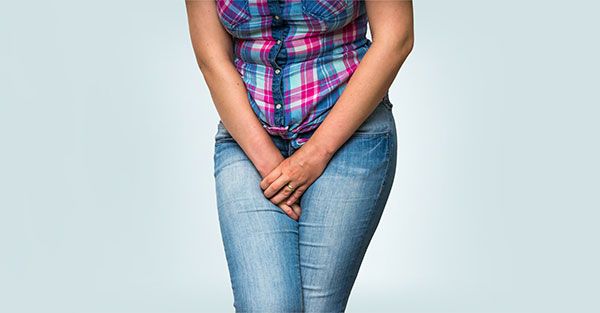
Stop Peeing Yourself, Start Addressing Your Urinary Incontinence
By Rebecca Roberts, PT, DPT
Urinary incontinence is a hot topic in the fitness community. In the past 2-3 years you have probably heard about CrossfitⓇ competitors peeing themselves while doing high impact exercises such as running and jumping rope. While this is an example of sport-induced stress incontinence, there are many types of non-sport related incontinence that affect people during daily activities. An estimated 25% of young women, 44-57% of middle aged women, and 75% of older women have incontinence(1) and 47-80% of women who exercise regularly suffer from incontinence.(2,3,4) While women experience incontinence more often than men, men can also suffer from incontinence.
What is Incontinence?
Continence is the ability to voluntarily control your bladder or bowel. The ability to be continent requires an intact nervous system, intact cognitive function, appropriate muscle strength, appropriate muscle coordination, and adequate mobility. When someone has urinary incontinence, there is a problem in one or more of these systems resulting in inability to control one’s bladder.
Types of incontinence
There are 4 main types of urinary incontinence:
- Stress incontinence occurs when the pelvic floor muscles are unable to remain contracted with activity/increased pressure in your abdomen, which causes your bladder to involuntarily release urine. A few examples of stress incontinence are peeing yourself when sneezing, coughing, running, or jumping rope.
- Urge incontinence occurs when your body thinks it needs to pee, regardless of how full your bladder is. This may result in peeing too often. An example of urge incontinence is needing to pee every time you get home or put your key in the door.
- Mixed incontinence occurs when you have incidences of both stress and urge incontinence.
- Functional incontinence occurs when you can recognize the urge to pee but are unable to walk to the bathroom in time to use a toilet. An example of functional incontinence is using a walker and having a slowed walking pattern that does not allow you to get to the toilet before peeing.
What contributes to incontinence
Incontinence can be caused by many different factors. Some of the most frequent contributing factors include:
- Poor pelvic floor muscle strength or coordination
- Prostate removal
- Diet
- High impact exercise
- Poor breathing habits
- Increased weight/BMI
- Poor pee habits (positioning, frequency, power-peeing, just-in-case peeing)
- Pregnancy
How much pee is normal? How much is too much?
Normal voiding of the bladder (peeing) occurs about 5-8 times per day and no more than once overnight. If you are having the urge to pee more frequently than this, you may be experiencing urge-related incontinence or urge related bladder dysfunction. A pelvic floor therapist can help you address these symptoms.
How can physical therapy help?
A pelvic floor physical therapist can help treat your urinary incontinence. They will perform a thorough examination to identify the type of incontinence you have and create a customized treatment plan. Treatment will include education on continence and may include a bladder diary, dietary changes to avoid bladder irritants, pelvic floor muscle training, peeing posture, therapeutic exercises, manual therapy, and functional training to overcome mobility deficits.
There is no better time to stop peeing yourself than now! To get started on your journey to dry pants contact your local Therapydia clinic to schedule an evaluation.
References
- Urinary Incontinence New Hope: Research Activities, July 2012, No 383. Agency for Healthcare Research and Quality, Rockville, MD. http://www/ahrq.gov/news/newsletters/research-activities/jul12/0712RA3.html
- Nygaard IE, Thompson FL, Svengalis SL, & Albright JP. (1994). Urinary Incontinence in Elite Nulliparous Athletes. Obstetrics & Gynecology, 84(2): 183-187.
- McKenzie S, Watson T, Thompson J, & Briffa K. (2016). Stress urinary incontinence is highly prevalent in recreationally active women attending gyms or exercise classes. International Urogynecology Journal, 27(8): 1175-1184.
- de Mattos Lorenco TR, Matsouka PK, Bracat EC, & Haddad JM. (2018). Urinary incontinence in female athletes: a systematic review. International Urogynecology Journal, 29(12): 1757-1763.